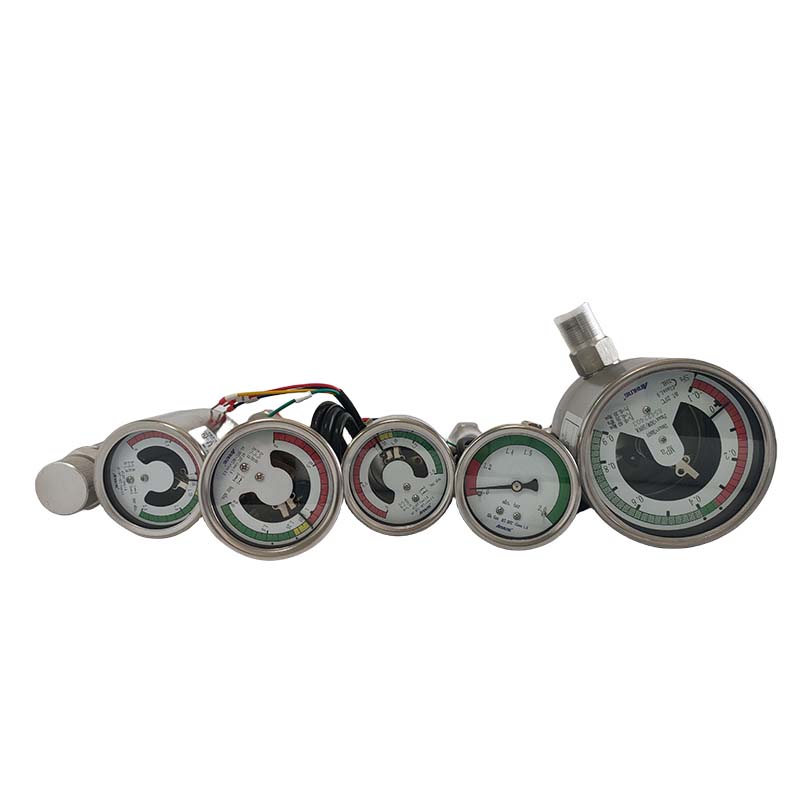You can know every new products be published here, and witness our growth and innovation.
Date:10-23-2025
1.It is composed of SF6 gas sealed outside the bellows 1 and connected to the SF6 gas in the circuit breaker. Through the lever 6 supported by shaft 5 and compared with the standard gas tank 3 sealed outside the bellows 2, it drives the micro-switch electrical contacts 4 to operate, thereby achieving its signaling and locking functions.
2. When the circuit breaker is out of operation, and the temperature of the SF6 gas in the circuit breaker at the rated density or pressure is equal to the ambient temperature, the state of the SF6 gas outside the bellows 1 is the same as that of the standard SF6 package 3 outside the bellows 2. The lever 6, supported by the axis 5, remains at a certain equilibrium position, causing the microswitch electrical contact 4 to be in the open position. As the ambient temperature changes, the pressure of the SF6 gas on both sides changes simultaneously. Therefore, the lever still remains at a certain equilibrium position supported by the axis 5, and the microswitch electrical contact 4 remains in the open position unchanged.
3. When the circuit breaker is out of operation and the temperature of the SF6 gas inside the circuit breaker is equal to the ambient temperature, if the circuit breaker leaks SF6 gas, the pressure of the SF6 gas outside the bellows 1 will decrease, while the pressure of the standard SF6 gas package 3 outside the bellows 2 remains unchanged. The lever 6 will lose balance, causing it to rotate counterclockwise at both ends. Eventually, it will reach a new equilibrium position. When the leakage reaches a certain extent, the microswitch contacts 4 with different functions will close respectively, issuing different instructions or signals to achieve their respective functions.

4. When the circuit breaker is put into operation, the standard SF6 gas bag 3 is still at the ambient temperature. As the load current passes through the circuit resistance and consumes electrical power, which is converted into heat energy, the SF6 gas inside the circuit breaker heats up and generates an increase in pressure. That is: the pressure of the SF6 gas outside the bellows 1 will increase, which will push lever 6 to rotate clockwise around axis 5, preventing the microswitch electrical contacts 4 from closing. In this case, if the circuit breaker leaks SF6 gas, the pressure of the SF6 gas outside the bellows 1 will decrease. However, due to the effect of temperature rise, more SF6 gas needs to leak from the circuit breaker than when it is out of operation to enable the microswitch electrical contacts 4 to close.